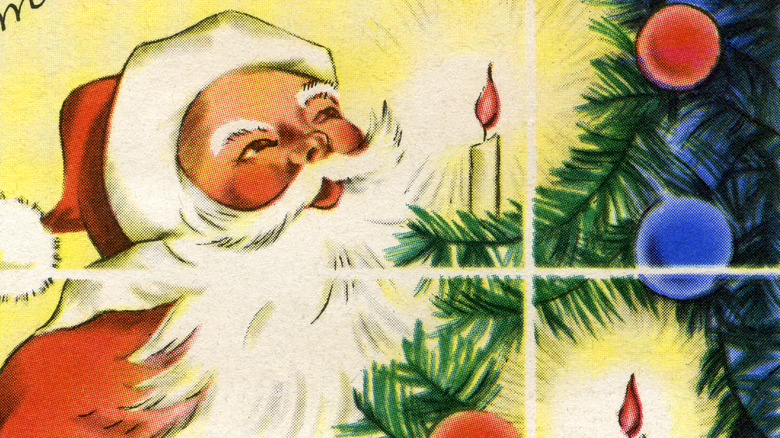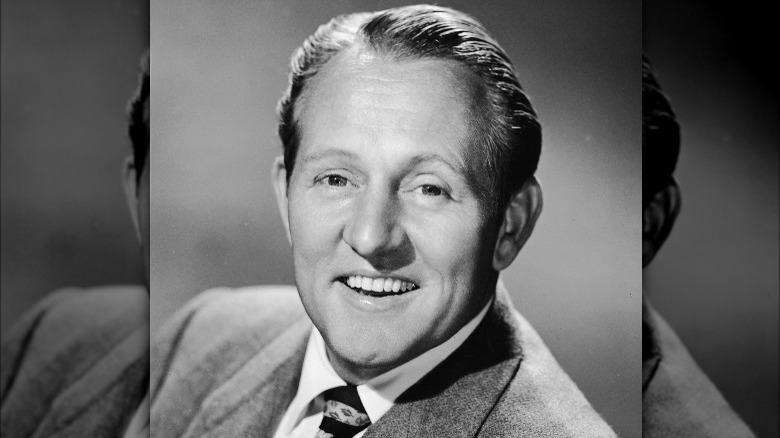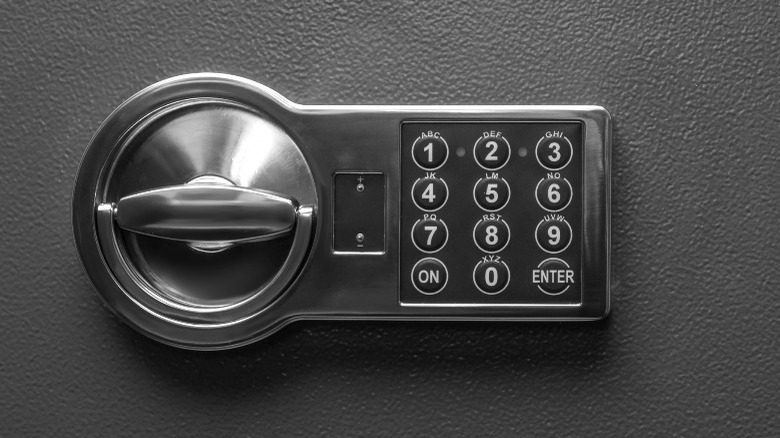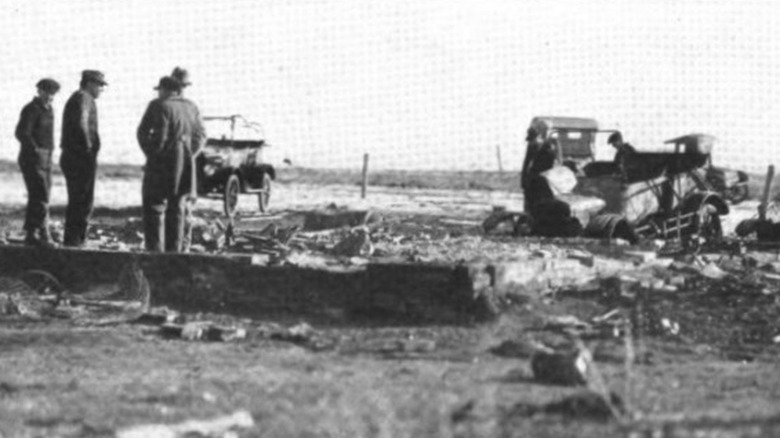The Unsolved 1924 Disappearance Of Mary Elizabeth Edens
On Christmas Eve, 1924, tragedy struck the small community of Babbs Switch, Oklahoma. During a Christmas party at the community's one-room schoolhouse, a fire broke out. Anywhere from 100 to 250 people, according to different sources, were in the school at the time. The building measured only around 26 feet by 36 feet, per The Trail Went Cold podcast [6:22].
The fire began when a teenager, Dow Bolding, playing Santa Claus, was pulling presents off a Christmas tree lit with candles. Bolding bumped one of the candles, which then caught the tree's decorations and dry needles on fire. As Bolding and others tried to douse the tree, they knocked it over, causing the flames to spread. Bolding would die in the fire, along with 32 others. Three more victims died in the following days. Almost half the victims were children (via The Oklahoman).
Following the fire, not all of the victims' bodies were identifiable. Among those who were never located was 3-year-old Mary Elizabeth Edens. However, Edens' family had reason to believe she hadn't died in the fire.
Mary might have escaped the blaze
During the school's Christmas program, Edens had been sitting on the lap of her aunt, Alice Noah. Noah was badly injured in the fire and died a few days later, but not before telling Edens' parents that she had handed Edens out the school window to safety. She didn't know the person to whom she handed Edens — she hadn't gotten a good look at them, according to The Trail Went Cold [3:40].
Noah's story gave Edens' parents hope that their daughter had survived. Local people searched the area around the school in case Edens had wandered off in the chaos, but they didn't find her. No one came forward claiming to be the person Noah had mentioned. Louis and Ethel Edens began to believe their daughter had been abducted (via The Trail Went Cold) [9:55-11:11].
The Edens spent the next several decades looking for their daughter, even hiring private investigators, but every lead turned out to be a dead end, until the 1950s, when a woman named Grace Reynolds appeared [11:11-11:54].
Reynolds came to believe she was Mary Edens
In late 1956, Elmont Place of San Bernardino, California, saw a story about Mary Elizabeth Edens. According to The Oklahoman, he became convinced that his friend Grace Reynolds could be Edens, because Reynolds had told him several times that she doubted she was really related to her family and wondered if she had roots she didn't know about. Place was the district governor of his local Lions Club, so he wrote to a fellow Lion in Hobart, Oklahoma, near Babbs Switch, trying to get in touch with Edens' family. The man in Hobart contacted Edens' younger sister, coincidentally named Betty Reynolds.
Betty Reynolds asked the men not to tell her parents about Grace just yet — they'd had too many disappointments already. However, she and her other sister, Etta Henderson, compared childhood pictures of Grace Reynolds to pictures they had of Mary, and thought the resemblance was remarkable. There were other odd similarities, namely a scar on the arch of Grace's right foot that matched one Mary had had. A blood test proved Grace Reynolds had the same blood type as the Edens, and that convinced the sisters. The whole family was reunited on February 9, 1957 (via The Trail Went Cold [12:45-14:03]). The Oklahoman says the reunion made national news, and the family appeared on the popular TV show "House Party" with Art Linkletter (above) not long afterwards. But within days of the family reunion, people were expressing doubts about Grace Reynolds' identity.
Reynolds' birth family disputed her claims
On February 19, 1957, the editor of the Hobart Democrat-Chief newspaper got a telegram from a paper in Stockton, California, claiming the Edens weren't Grace Reynolds' parents. A woman named Dorothy Link had seen the news stories about Reynolds and called The Record in Stockton to say she was Reynolds' real sister (via The Oklahoman).
A reporter at The Record, Eugene Kuhn, looked into it. He found Reynolds' likely birth mother, Goldie Thomas (or possibly More), and got a notarized statement from her indicating Reynolds' actual birthplace and birthdate. She was two years younger than Mary Elizabeth Edens. By May 1957, Kuhn had relayed all this information to the paper in Hobart. Kuhn said Link had exposed Reynolds out of anger because Reynolds had married Link's former husband. Additionally, she was insinuating that their mother was a kidnapper. Link showed Kuhn a letter from their other sister, Inez Collins, mocking Reynolds' claim. As well as informing the Hobart paper, Kuhn confronted Reynolds with these details, but she stuck to her story and refused to talk without speaking to an attorney.
The two newspapers agreed to break the story simultaneously on May 22. However, Ransom Hancock, who owned the Hobart paper, knew Louis Edens personally and felt he ought to tell Edens what he knew before running the story. Hancock showed Edens his proof, and Edens asked him not to publish it until his wife had died, because she truly believed Reynolds was their daughter. Hancock agreed (via The Oklahoman).
The Hancocks kept the secret for decades
Hancock kept his file on Reynolds in a safe in his office, according to The Trail Went Cold [19:26-33]]. He later gave the information to historian Delbert Braun, but asked that Braun keep the secret, too. Many years after both of Edens' parents had died, Hancock's son Joe decided to run the story and also shared his information with the bigger Oklahoma City paper, The Oklahoman. They ran their stories December 24, 1999, the 75th anniversary of the Babbs Switch fire.
Joe Hancock told The Oklahoman he was proud of his father's decision to keep the secret, saying it "reflects a humanity that's been lost in modern journalism." He feels Ethel Edens found peace in believing Grace Reynolds was her daughter, and nothing could've been gained by publishing the story.
He did get permission from Betty and Etta, Mary Elizabeth Edens' sisters, who were still living in 1999. They already knew the truth. The Trail Went Cold claims they never got along with Reynolds, anyway [around 33:05]. The podcast also theorizes that Ethel Edens may have learned the truth about Reynolds when visiting her in California, where she would've met Reynolds' birth family [33:13-25]. Reynolds' biological sisters speculated that she latched on to Elmont Place's theory about her identity because she was ashamed of her true past, coming from a poor and dysfunctional family (via The Trail Went Cold [around 31:10]).
What really happened to Edens?
Reynolds claimed to be Edens until she died in April 2008; she even had Edens' name and birthdate put on her gravestone (via The Trail Went Cold [20:20-35]). When a reporter for The Oklahoman contacted her in 1999, she said she didn't care what anyone else thought about her identity. She said it had already been "proved." She also wasn't surprised that her alleged birth mother, Goldie Thomas (or More), had signed a statement repudiating her claims. It was a way to avoid being outed as a kidnapper.
However, since Reynolds' claims have been pretty conclusively refuted, Edens' fate remains a mystery. The Trail Went Cold posits that Edens' aunt, Alice Noah, might not have been lucid when describing what happened the night of the fire, since she was severely injured. She could have remembered it wrongly. The podcast doesn't rule out the possibility of an abduction, or of Edens wandering off and dying of exposure in the winter cold. The podcaster notes that whereas several of the fire victims were identified by jewelry or other, unburned personal items, the ring and locket Edens was wearing were never found. However, the podcaster never discounts the possibility Edens really died in the fire [35:00-41:20].
That was the conclusion Joe Hancock reached. He told The Oklahoman, "Mary Elizabeth Edens was not taken from the fire site that night but was in all probability burned with 35 other good Kiowa County folks."





